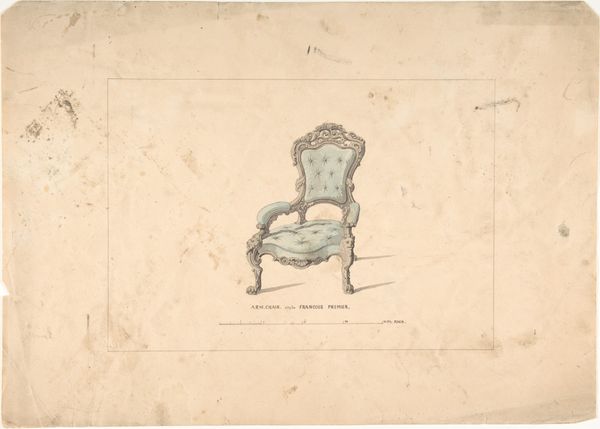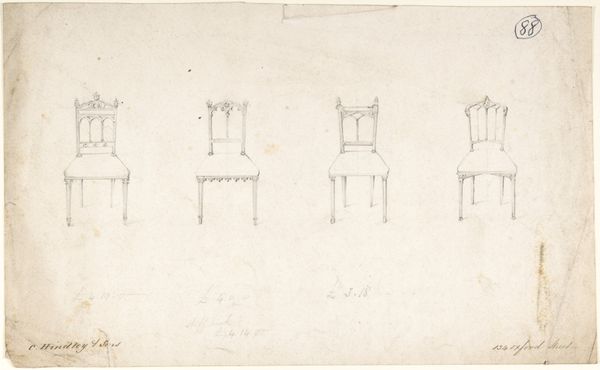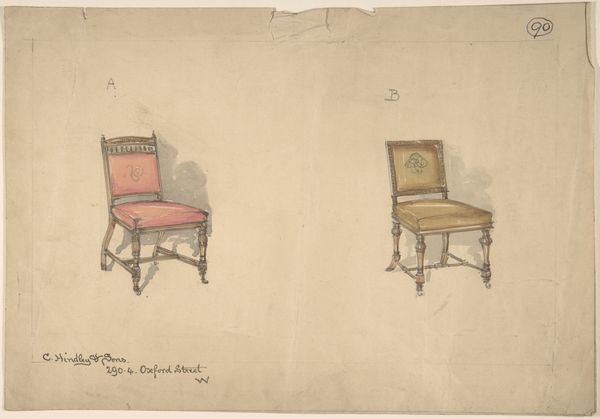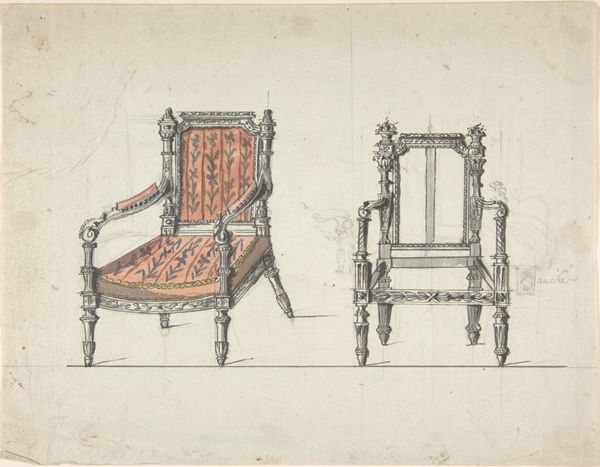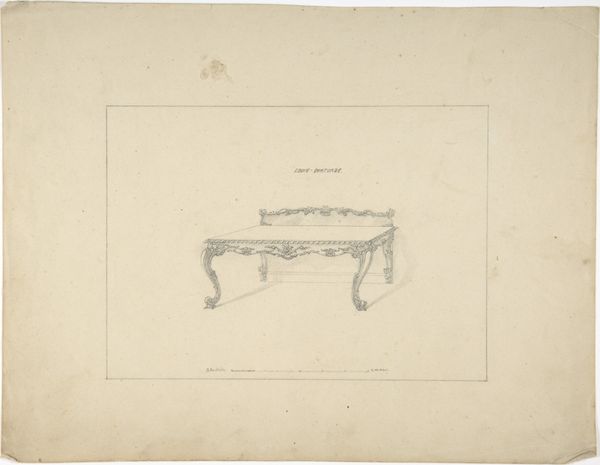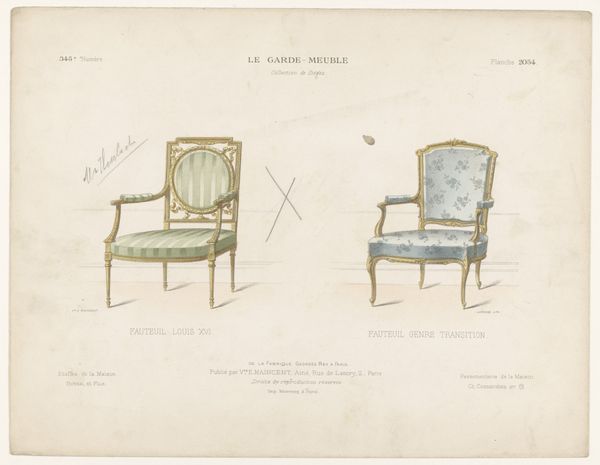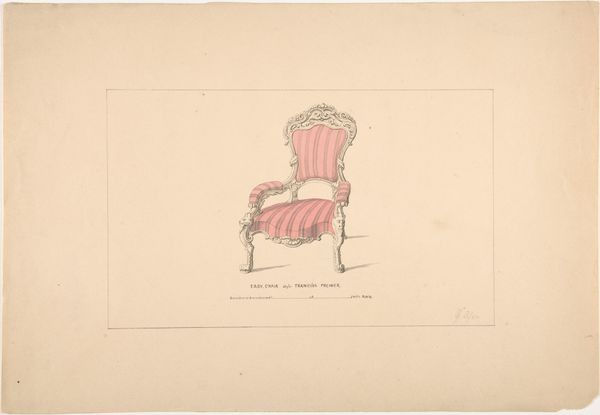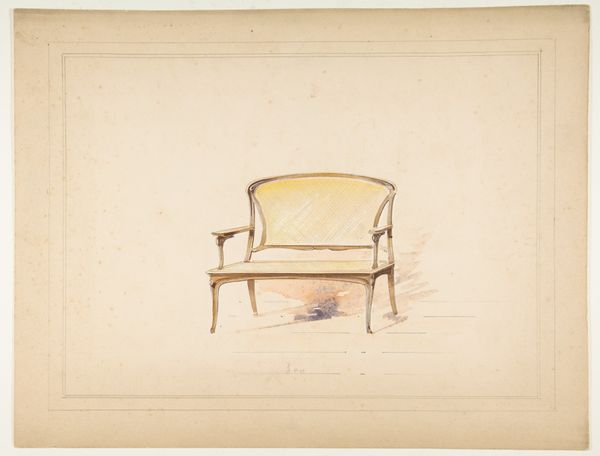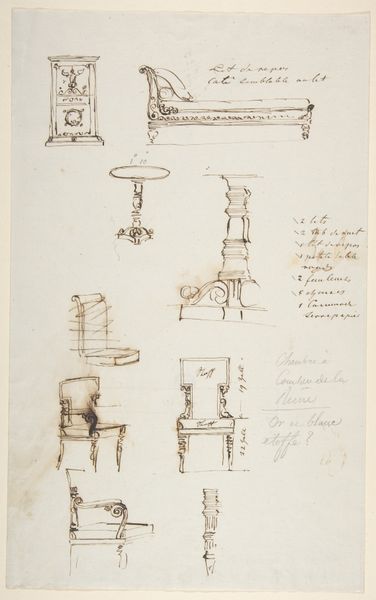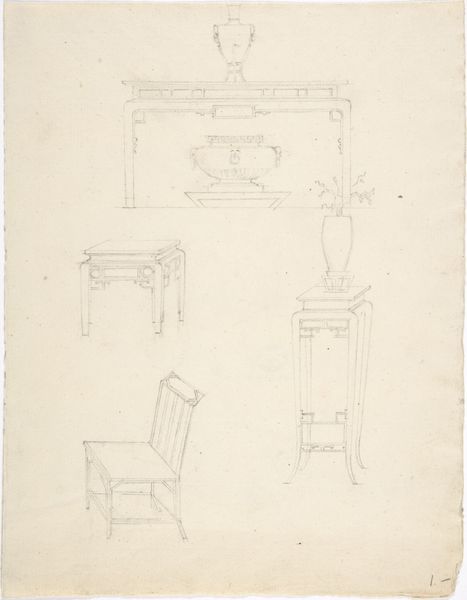
drawing, print, paper, pencil
#
drawing
#
neoclacissism
# print
#
furniture
#
paper
#
form
#
geometric
#
sketch
#
pencil
Dimensions: sheet: 8 11/16 x 12 1/4 in. (22 x 31.1 cm)
Copyright: Public Domain
Curator: This preliminary sketch, rendered in pencil, ink, and printed on paper, is titled “Design for a Chair with Turned Front Legs.” Though unsigned, its neoclassical leanings suggest a maker working sometime between 1800 and 1850. What's your immediate impression? Editor: It feels surprisingly intimate for a design drawing. There’s a tentative quality to the lines, an uncertainty, that almost betrays the intent of flawless neoclassicism. It humanizes the design process, somehow. Curator: Indeed. When we consider the sociopolitical landscape of the early 19th century, this type of design, seemingly straightforward, spoke volumes. The rising bourgeois class, eager to emulate aristocratic taste, demanded such pieces. This wasn't merely furniture; it was a signifier of status and aspiration. Editor: So the geometric forms and classical references functioned as visual cues for social mobility? This simple chair became a sort of propaganda, reflecting an individual’s aspiration to climb the social ladder, but that climbing was rooted in gendered, raced, and political constructs? Curator: Precisely. We must understand the drawing's creation within the context of evolving class structures and their manifestations through material culture. The design isn't purely about form, it’s about the values and beliefs encoded within that form, including who gets to sit in this chair and who doesn’t. Editor: And even in its sketched, preparatory state, those power dynamics are subtly present. It challenges this notion that furniture is a mere commodity, an afterthought when arranging living space. Instead, these objects reflect and mold a complex sociopolitical history, even something as mundane as a chair. Curator: Absolutely. Appreciating the multifaceted contexts of an artwork enriches our understanding and disrupts simplistic art historical narratives. Editor: Indeed, it transforms a simple chair sketch into an emblem of complex historical forces.
Comments
No comments
Be the first to comment and join the conversation on the ultimate creative platform.
